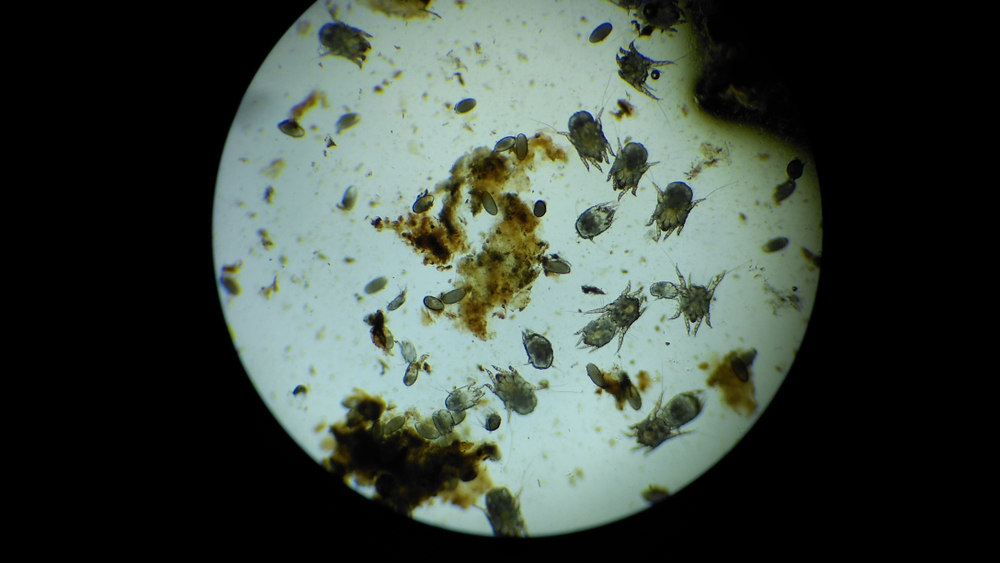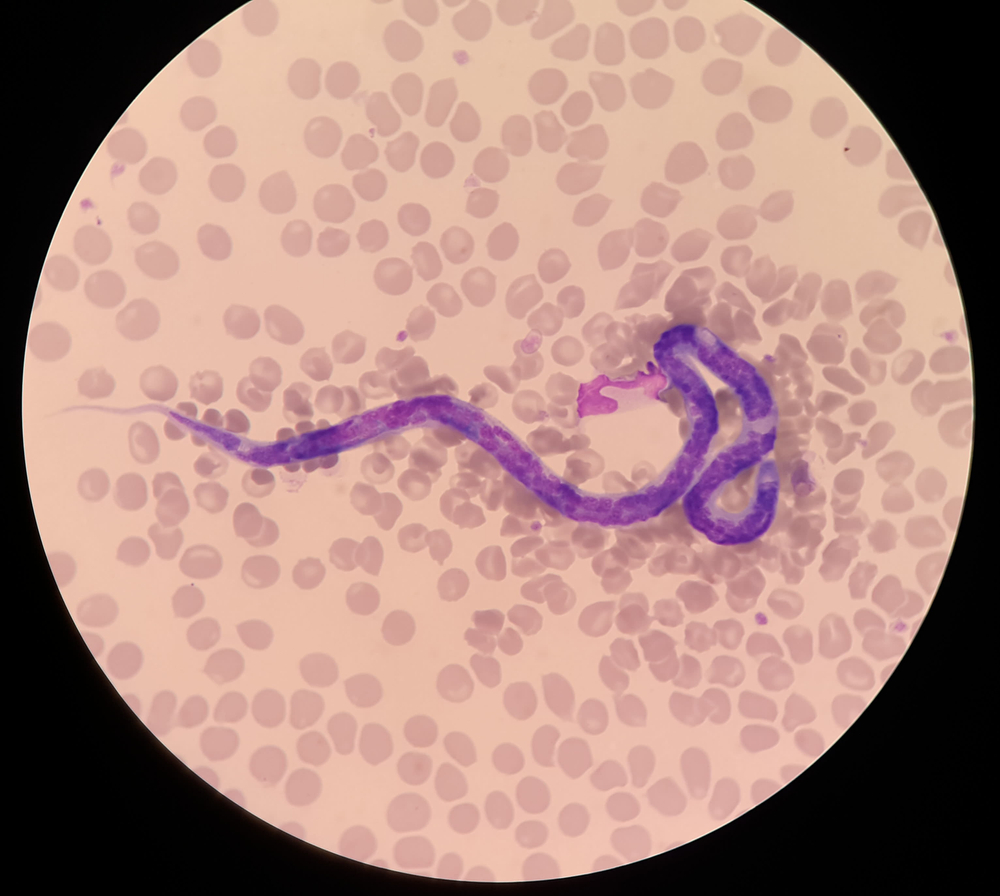Internal and external parasites can not only make your pet miserable, but can also cause serious, sometimes fatal, diseases. Read on to learn how to protect your four-legged friend from common parasitic diseases.
#1: Heartworm disease
Heartworm disease is transmitted when an infected mosquito bites, and heartworm larvae are injected into the pet. These larvae (i.e., microfilariae) wriggle their way through the pet’s body to reach the major blood vessels surrounding the heart and lungs, causing serious damage along the way.
Heartworm disease signs in dogs include:
- Persistent cough
- Reluctance to exercise
- Decreased appetite
- Fatigue after exercise
- Weight loss
- Abdominal fluid buildup
Heartworm disease signs in cats include:
- Coughing
- Asthma-like attacks
- Vomiting
- Decreased appetite
- Weight loss
- Difficulty walking
- Seizures
- Abdominal fluid buildup
- Sudden collapse or death
While plenty of heartworm preventive options are available, few treatments are successful. In fact, the FDA has approved only one treatment for dogs, and none for cats. In addition, the treatment for dogs requires several months of strict exercise restriction, and has serious side effects.
#2: Tick-borne illnesses
A variety of tick species can be found in Tennessee, and these pests can transmit a multitude of illnesses to dogs, cats, and people. Some of the most common tick-borne illnesses found in our area include:
- Ehrlichiosis and anaplasmosis — These two diseases can be transmitted by many tick species, and may cause subclinical infections. However, if your pet develops signs, you may notice fever, anorexia, lethargy, weight loss, bleeding disorders, stiffness, swollen joints, neurological issues, and eye problems.
- Lyme disease — Although more common along the east coast, the black-legged tick that carries the Lyme bacterium is spreading across the country. If your pet is bitten by an infected tick, they may show shifting-leg lameness, swollen lymph nodes, fever, lethargy, and anorexia.
- Rocky Mountain spotted fever (RMSF) — Several tick species are known to cause RMSF, and signs in dogs can develop quickly. These signs may include bleeding and bruising disorders, fever, lethargy, joint and muscle pain, tremors, and vomiting. Cats generally do not show illness.
- Cytauxzoonosis — Although commonly called bobcat fever because bobcats are the main reservoir host for this pathogen, cats can become acutely ill from an American dog tick or lone star tick bite. Signs include high fever, difficulty breathing, depression, dehydration, anorexia, anemia, and jaundice, which often rapidly progress to hypothermia, coma, and death.
While the spring and fall are generally considered the height of tick season, these pests are becoming more prevalent and hardy, and capable of popping up anytime the temperature rises above freezing. To ensure you and your pets remain protected from tick-borne illness, administer tick prevention year-round.
#3: Intestinal parasites
Multiple intestinal parasites cause severe illness in pets, particularly if they are young, or their health is already compromised. Common intestinal parasites that infect pets include:
- Roundworms — Roundworm infections are widespread in North America and affect most puppies through maternal infection. Eggs can survive in the soil for several years, making these pests difficult to eradicate once they’re in your environment. Infection causes diarrhea, vomiting, rough hair coat, a bloated belly, and stunted growth.
- Tapeworms — Tapeworms are generally acquired when pets eat fleas carrying larvae, but pets can also get them by eating rodents. Typically, the only visible sign is tapeworm segments in the pet’s stool, or in their hind end fur.
- Whipworms — Foxes and coyotes act as an infection source by contaminating soil or dropping feces that dogs eat. Infection appears as diarrhea, anemia, dehydration, and a decreased appetite.
- Hookworms — Hookworms can be transmitted through several means, including the mother passing infection to her puppies, ingesting contaminated soil and feces, or picking up the parasite through the paw pads. Since this parasite feasts on your pet’s blood, you’ll notice anemia, weight loss, and bloody diarrhea.
While intestinal parasites can cause serious illness, they can easily be prevented by administering a monthly heartworm preventive. These products typically contain ingredients that provide deworming for multiple intestinal parasites, ensuring your furry pal remains safe.
#4: Mites

Mange mites and ear mites are relatively common external parasites in pets, and a certain mange type can also affect people. Demodectic mange is caused by a mite that normally lives on your pet’s skin. However, if your pet has a weakened immune system, these mites can overpopulate, and cause localized or generalized hair loss, skin redness, and scaly areas. Sarcoptic mange, on the other hand, is highly contagious among pets and people, and causes intense itching, hair loss, and a skin rash.
Ear mites are most commonly found in cats and can easily spread through contact. These tiny pests make your cat’s ears extremely itchy, and can cause an ear infection, excessive debris, and sores around the ears.
Fortunately, treatment is relatively simple for all mite types, and a proper treatment plan can return your pet to their itch-free self.
#5: Fleas
Fleas are notorious for being difficult to eradicate from your home, so prevention is best for protecting your pet against the most common flea-borne issue—hypersensitivity (i.e.,flea allergic dermatitis). Pets who are allergic to fleas can experience extreme itchiness, and may scratch until they develop sores. High quality, regular flea prevention can keep fleas out of your home and solve the problem.
Keep your pet and your family safe from the threat of parasitic diseases by developing, and sticking to, a year-round parasite prevention plan. Contact our WesVet Animal Hospital team for advice on choosing the best product for your furry pal.







Leave A Comment